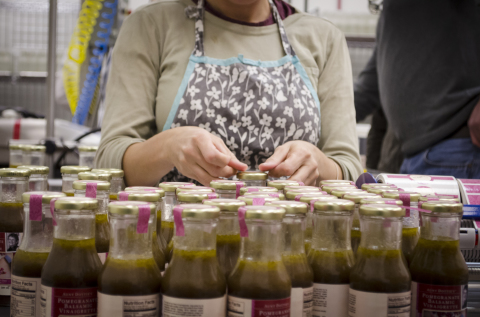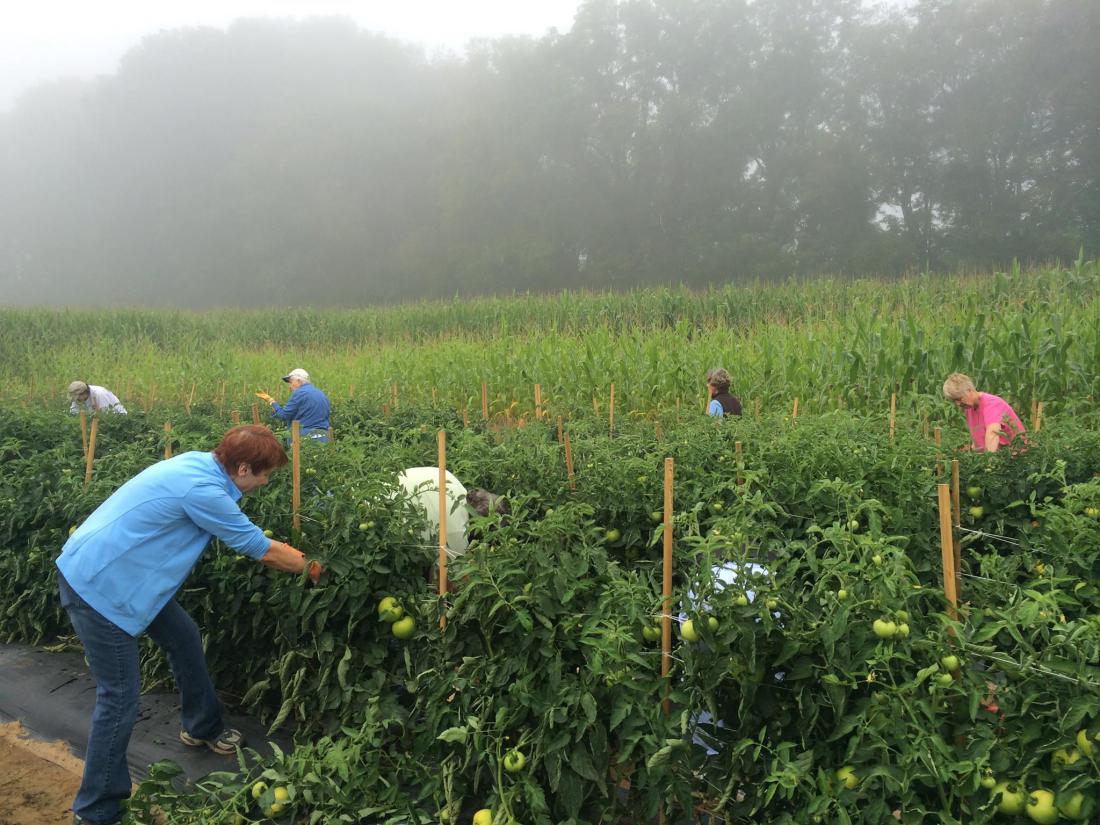For many of us, when we think of preserved foods, we picture our grandparents carefully canning tomatoes from their garden or the menu at a trendy restaurant featuring sauerkraut or pickled quail eggs. But imagine what food preservation means to someone experiencing food insecurity or to a donation grower faced with excess produce rotting in the field, and the image becomes something quite different.
As we move from the bountiful days of summer to the barren cold of winter, the demand on local food pantries and kitchens remains the same — only now gardeners and farmers who grow food for donation or give their excess produce have significantly less yield to offer. Though preserved produce can provide long-term storage and health benefits, there are many restrictions that limit how that food can be donated to pantries or open kitchens. And for good reason. Improper canning or fermenting can result in wasted food, food poisoning and even botulism — a paralytic and potentially fatal illness caused by a toxin produce by the Clostridium botulinum bacterium.
Like most area food suppliers, MANNA FoodBank, which distributes food in 16 western North Carolina counties, will not accept any donations of home-canned goods. It’s not that the organization is ungrateful, says communications and marketing director Becky Upham, but food safety is something that has to be taken very seriously.
“We want to trust the good intention of everyone who donates,” Upham says. “But it’s the same idea as distributing an opened food container, and it’s a risk we wouldn’t take. We need people to be able to trust us as a safe food source.” Any canned or fermented food donated to a food pantry must be produced in a U.S. Food and Drug Administration-compliant food-production facility, notes Upham. It also has to be able to be tracked in the case of a recall.
The restrictions may seem daunting, but that hasn’t stopped area growers from finding ways to preserve food for donation.
Members of the Haywood County Gleaners, a volunteer group that gathers leftover produce and crops from area farmers, have been collecting fresh produce for the past three years, donating to facilities including the Open Door in Waynesville. But the gleaners knew that all the produce couldn’t be used right away, meaning some would be wasted, so they began looking at food preservation.
“The one thing that initially hindered our push was finding out how we could meet all the requirements,” says gleaner Mary Sue Kindred. “We knew we could offer classes and allow people to can for themselves, but the hard part for a person on a limited income is purchasing the jars and all the equipment you need to do it properly. So we knew we wanted to find a way that we could get involved in directly providing that food to the pantry in a way that could be stored.”
The gleaners reached out to the Haywood County Extension Office and took classes on dehydrating, freezing, canning and making jellies with an extension agent. They partnered with the commercial kitchen at Open Door to freeze squash, potatoes, apples and other produce in the facilities freezers, in addition to canning 300 quarts of tomatoes last fall. Grant funds and donations were used to cover the additional costs of jars and equipment.
But is fermentation and canning being used by growers in the Asheville area to combat food insecurity on a larger scale?

“To my knowledge, there’s nobody that’s doing anything like that right now, but it’s definitely something that’s been on our radar for a while,” notes Chris Reedy, executive director of Blue Ridge Food Ventures. “The dots are there, though. It’s laid out.”
Though the space at BRFV is currently only being used by for-profit ventures, Reedy says there have been nebulous discussions with gleaners and other organizations about someday using the FDA-compliant facility to preserve food for donation.
“We are able to provide the know-how, and we have the equipment,” Reedy says. “Unfortunately, we don’t have the time or the manpower, so essentially we need volunteers to do the work. But we can be a resource, and we want to be.”
Reedy notes that the facility’s equipment allows for a higher quantity of production — for example 100 jars of salsa produced in one batch in the facility’s tilt skillet. That equipment can also provide a reduced processing time and more accurate PH readings for better food safety. The facility also works with a food scientist from N.C. State University to ensure the processes used in producing acidified foods are safe. “The consequences from a mistake with acidified productions are dramatic,” Reedy notes.
Unfortunately, having a facility like BRFV is only half the battle. Nonprofit ventures looking to donate preserved foods have many factors to consider, Reedy continues. The preservation would likely need to be done in such a way as to not incur too much cost, which in many cases precludes using freezers. The cost of jars can also be prohibitive, and the facility receiving the food donations would need to have the required insurance. Such costs could likely be covered through grant funds, Reedy says — though grant writing and the management of those funds does require manpower.
But Reedy adds that Blue Ridge Food Ventures would like to become a resource for groups that are able to provide their own people and their own funding, and who are willing to take advantage of the facility during off-hours. “The real focus of BRFV is local production and economic development, but I think [food security] is just as important,” Reedy says. “We want to engage in this kind of thing — we have all this capacity, and we want to fill it with this kind of activity. I’m more than willing to talk to whoever is out there to make this happen.”
For small-scale food security efforts, church groups and donation growers may also consider hosting classes to teach individuals how to practice home canning and provide produce to get them started. Reedy notes that these activities would not require a commercial kitchen, though it is important to follow established procedures and recipes. He recommends the Ball Book as a great resource, as well as the websites of the University of Nebraska, the University of Oklahoma and N.C. State. “Going off recipe” can potentially lead to clostridium botulinum contamination, he cautions.
Kindred says the Haywood Gleaners are continuing to explore ways to expand their program. The group will continue its efforts at Open Door, as well as partner with Grace Church in the Mountains and Haywood Pathways, the facility built by “Extreme Makeover” host Ty Pennington and his crew, which contains a commercial kitchen and a homeless shelter.
Kindred notes that at all three facilities, the gleaners will encourage clients to participate in the canning process and learn how to continue the activity on their own. “It’s important to get everyone involved,” Kindred notes. “It’s not a handout; it’s a hand up.”




Carrie,
I’m a friend of Nate and Ashley. Ashley forwarded your post. I was struck by the apparent simplicity of this challenge. Why can’t locally grown produce be channeled through a process that addresses food safety requirements? Isn’t it just a matter of scale, time, competency, and money ? You managed to get my feeble mind wandering. Thank you!
Thanks for the comment, Jim! I think Chris Reedy said it best with, “The dots are there,” but endeavors like this do require a lot of learning, careful attention and quite a bit of time. But I suspect there are many people up to the challenge. The Haywood gleaners’ effort was really the result of a small, dedicated group of volunteers. Other groups that are interested in starting something similar should consider reaching out to organizations like BRFV (https://www.advantagewest.com/food-and-natural-products), the gleaners (https://www.facebook.com/HWGleaners), Gardens that Give WNC (http://www.thelordsacre.org/wp/2013/03/churches-organizations/the-western-nc-alliance-for-gardens-that-give) or their local cooperative extension office.